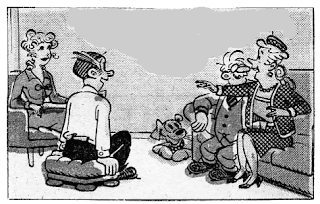There is much to read about Pierre Renoir's beautiful surfaces and the luminosity and freshness of his oil paintings. The soundness of his compositions, though, is sometimes overlooked, yet is fundamental to the appeal of his work.
I have set some of Renoir's compositions against those of three Renaissance masters. I have stripped away the religious, mythical and historical elements and costumes in order to focus attention on the arrangement of the forms. All the illustrations are reduced to line only, to make comparison clearer.
One of the great challenges in art is the composing of several figures, overlapping each other, full of variety and action, packed into a small space, yet retaining clarity and readability. The first example is by Fra Bartolommeo and features three people lamenting the death of a fourth.
Michelangelo's contribution is a group of naughty boys getting into the wine supply.
From Raphael we have a teacher with some rapt students.
Renoir's theme in this comparison is a modern one: young adults enjoying some leisure time in a casual social setting.
I have set some of Renoir's compositions against those of three Renaissance masters. I have stripped away the religious, mythical and historical elements and costumes in order to focus attention on the arrangement of the forms. All the illustrations are reduced to line only, to make comparison clearer.
One of the great challenges in art is the composing of several figures, overlapping each other, full of variety and action, packed into a small space, yet retaining clarity and readability. The first example is by Fra Bartolommeo and features three people lamenting the death of a fourth.
It looks as though Renoir learned some lessons from the great Florentines.














